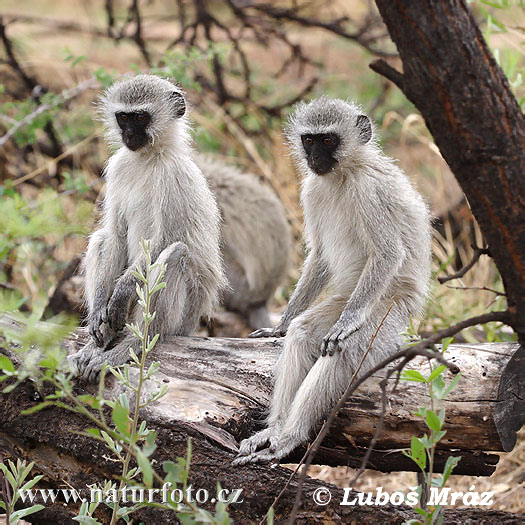.jpg) |
| BABY VERVET MONKEYS PAINTING |
 |
| VERVET MONKEY STAMP |
 |
| TWO VERVET MONKEYS ARE GROOMING ANOTHER VERVET MONKEY |
The Vervet Monkey is not usually able to reproduce until they are about five years old, although their age of sexual maturity is known to vary slightly and may be dependent on how much food they have access too. After about 5 and a half months, females give birth to a single infant which is cleaned by it's mother at birth, and clings to her stomach during the first week or so. Vervet Monkey babies quickly develop strong social bonds with other monkeys and are known to begin interacting and playing with them by the time they are a month old. They have pink faces and black fur and don't tend to develop their adult colouration until they are a few months old. Vervet Monkey offspring suckle on their mother's milk until they are nearly four months old and start to eat softer vegetation, but they are not fully weaned until they are about a year old.
 |
| VERVET MONKEY TEACHING TO IT,LITTLE KID |


No comments:
Post a Comment